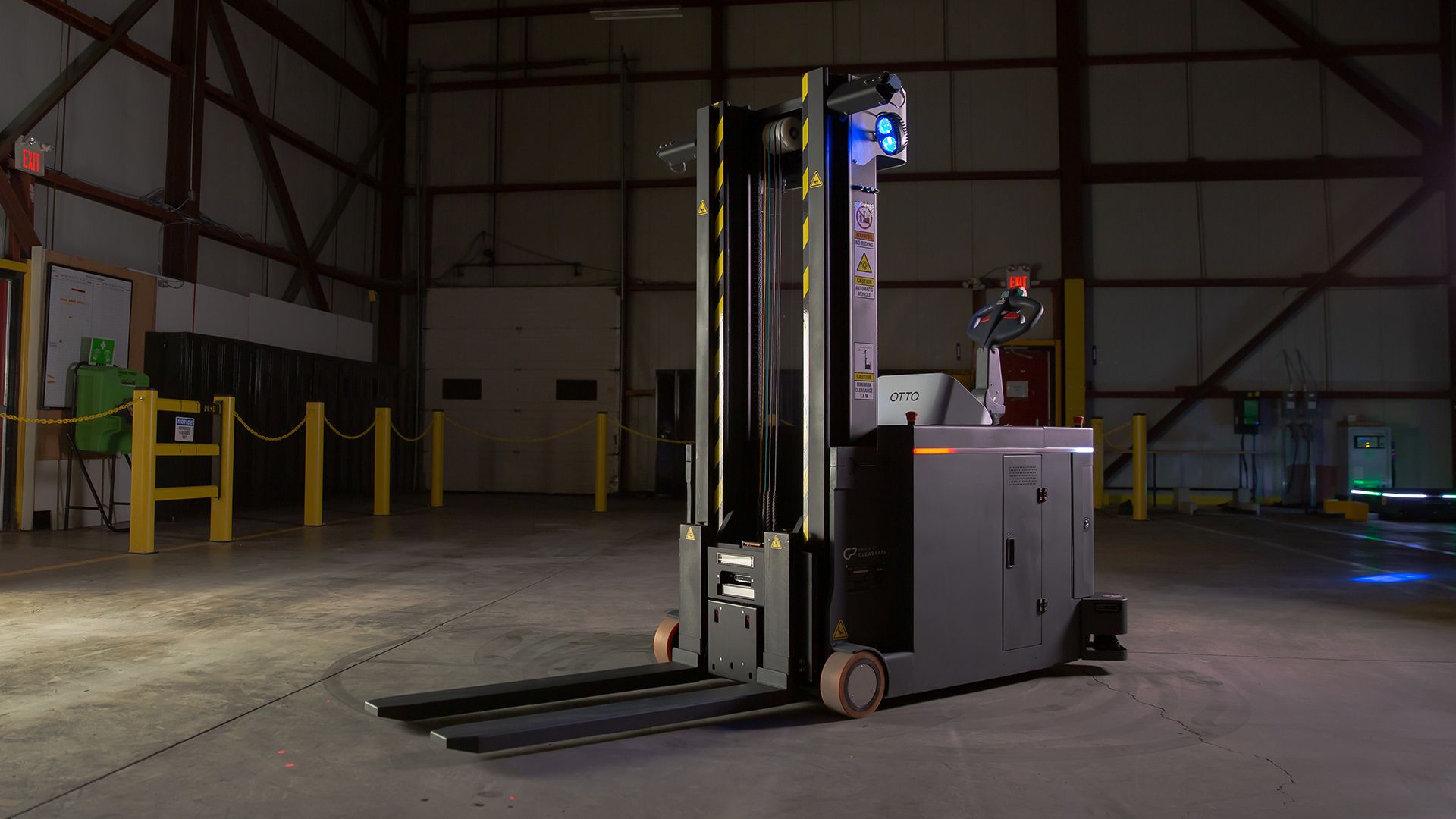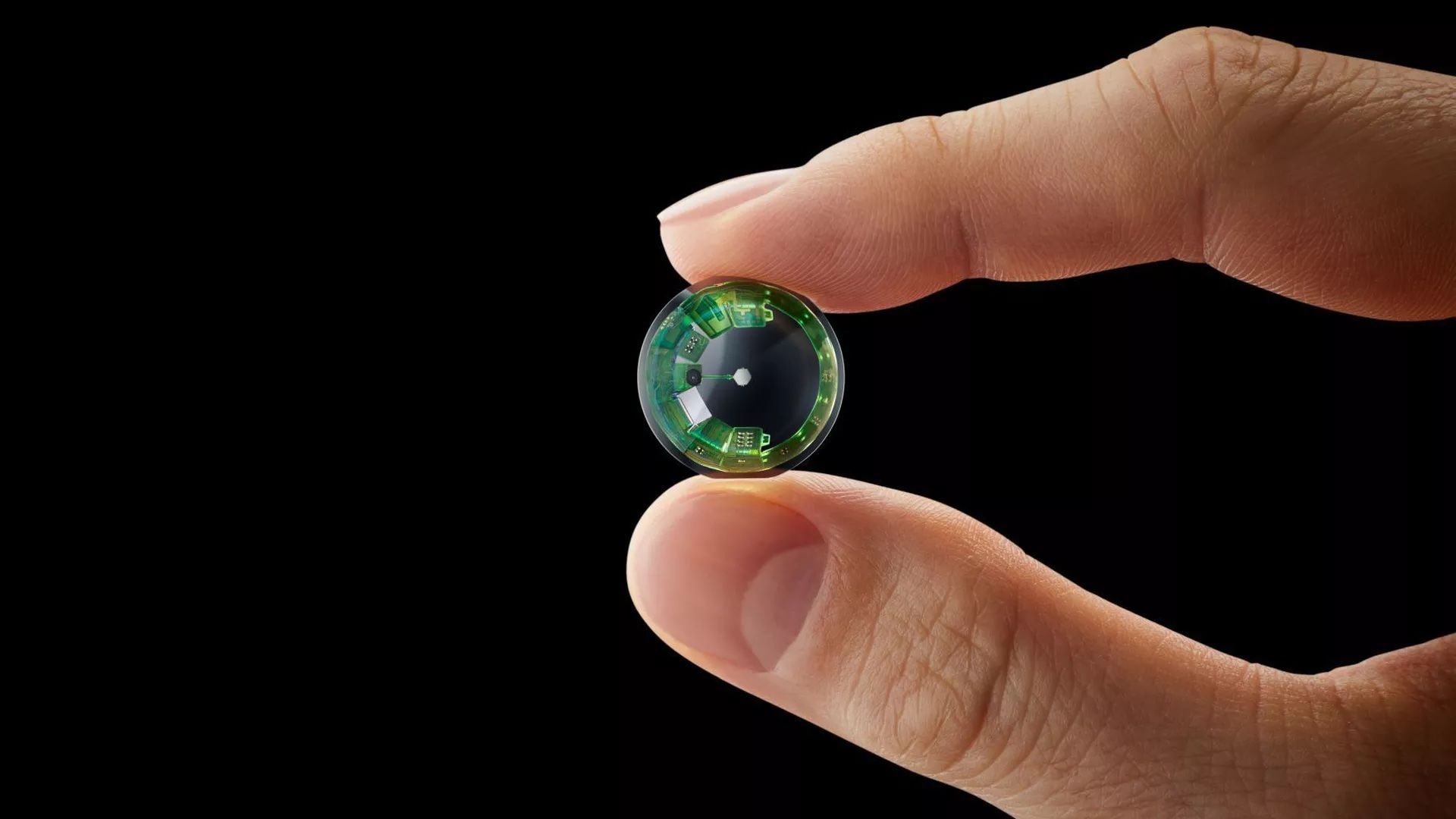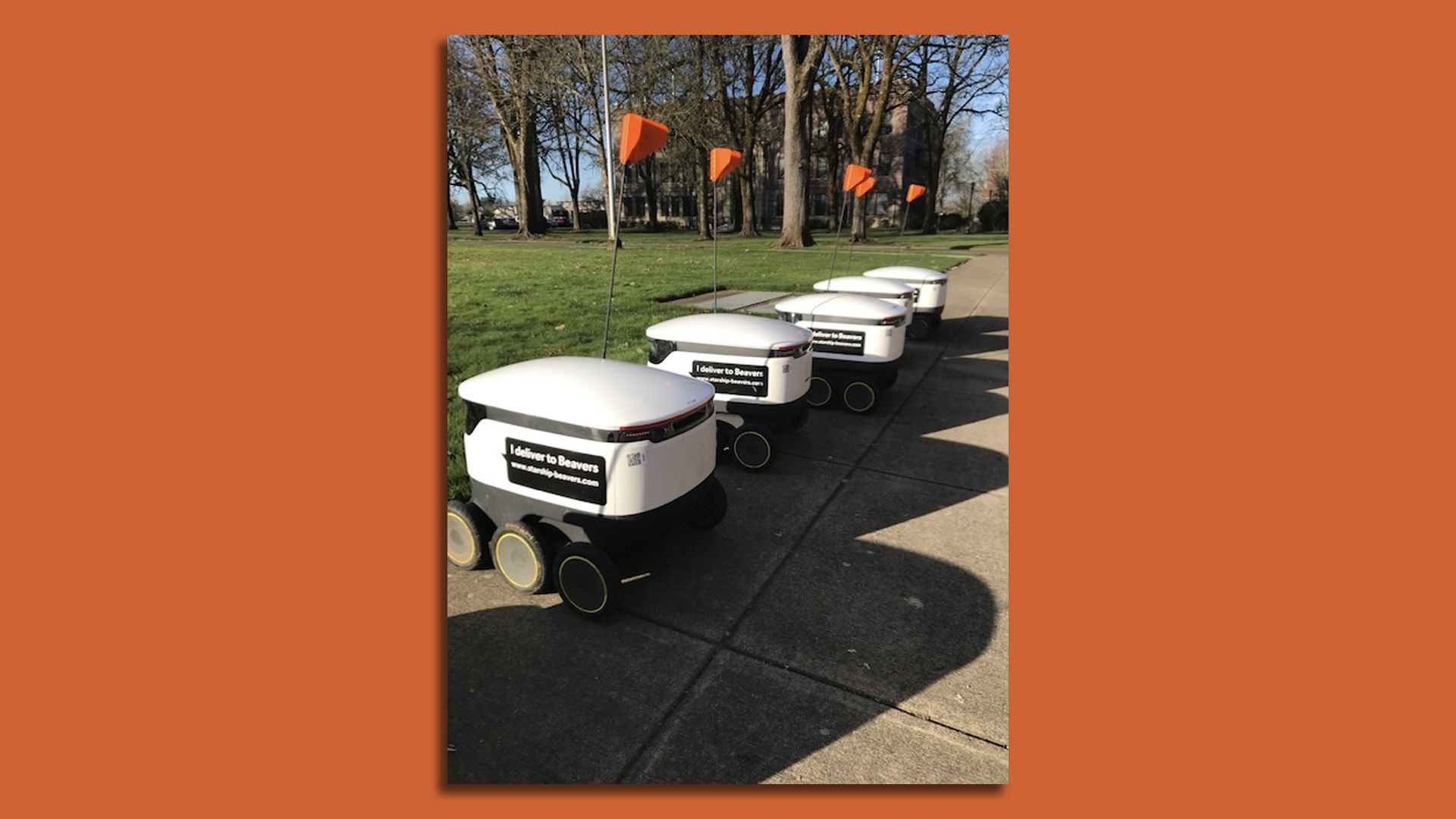| | | | | | | Presented By SoftBank Group | | | | Axios What's Next | | By Jennifer A. Kingson and Joann Muller ·Mar 31, 2022 | | Emerson Collective founder & president Laurene Powell Jobs and chef, humanitarian and World Central Kitchen founder José Andrés will join Mike Allen in conversation at Axios' inaugural What's Next Summit April 5. Register here to watch virtually on Tuesday. - Today's reader photo comes from Gabi Ford, a resident of Corvallis, Oregon, who took it on the campus of Oregon State University.
- See something cool or interesting that speaks to the way we'll live, work, play and get around in the days ahead? Email your pix to us at whatsnext@axios.com.
Today's Smart Brevity count: 1,121 words ... 4 minutes. | | | | | | 1 big thing: Self-policing scooters |  | | | Photo courtesy of Superpedestrian | | | | Don't speed, swerve or ride illegally on a sidewalk in one of the new scooters from Superpedestrian — its "Pedestrian Defense" technology will forcibly slow you to a stop if you misbehave, Jennifer A. Kingson writes. Why it matters: Safety concerns are holding cities back from deploying more e-scooters as alternatives to cars. Superpedestrian's new system could help snuff out dangerous moves by riders, potentially broadening e-scooter acceptance and making cities safer. Driving the news: Superpedestrian, a company that runs LINK e-scooter networks in 60 cities globally, just raised $125 million to deploy Pedestrian Defense, an advanced AI safety system. - "It takes in data from a lot of different sensors, and it not only detects when somebody's riding on a sidewalk, it also can correct that behavior," Jamie Perkins, director of communications for Superpedestrian, tells Axios.
- It can also tell "when somebody is repeatedly aggressively swerving or hard-braking, or riding the wrong way on a one-way street," she said. "And we can slow the scooter down and stop it, just like on a sidewalk."
- First, a light on the handlebar will flash red.
- Then, if the rider doesn't shape up, Pedestrian Defense will start to reduce the vehicle's speed — eventually to a full (and safe) stop.
- The rider is notified through an app why they've stopped, "so they can move the scooter back out into the street and be on their way," Perkins says.
Where it stands: Pedestrian Defense will be deployed this year starting in 25 cities in the U.S. and Europe. - It'll know the places where it's legal to ride on the sidewalks and won't disrupt riders who are obeying the law.
- It'll also know, via geofencing, where it's illegal to park an e-scooter, and will alert riders when they've left their vehicle in the wrong place.
- And it can identify when a scooter needs to be repaired and, in some cases, fix it remotely.
"The existential issues [for micromobility operators] are scooter parking and rider behavior," Perkins says. "It's still a really new industry — the first scooters rolled out on the street 5 years ago." Read the full story |     | | | | | | 2. Self-driving forklifts aim to make factories safer |  | | | OTTO Motors' autonomous forklift. Photo courtesy of OTTO | | | | A self-driving forklift may be the next wave of warehouse and factory innovations, saving companies on labor and, ideally, making industrial settings safer for everyone, Joann Muller writes. Why it matters: Demand for logistics help is soaring, but forklift operators and other skilled workers are in short supply. Robotic vehicles are one way that manufacturers and logistics companies can address labor shortages while running their operations more safely and efficiently. - Notably: While autonomous vehicles aren't yet ready for deployment on U.S. roadways, they're already being employed in factories and other industrial settings.
Driving the news: OTTO Motors, whose autonomous mobile robots are widely used in automotive plants, says its new self-driving forklift can pick up and carry up to 2,640 pounds and navigate crowded factory floors using many of the same sensors and software being developed for self-driving cars. - The forklift's software makes real-time decisions about where it's going and what it's picking up, and can steer around people and other obstacles.
- It can also help avoid accidents linked to poorly trained forklift operators who speed, make sharp turns or drive with elevated loads, causing tipovers.
Read the full story |     | | | | | | 3. Smart contact lenses put tiny screens on your eyes |  | | | Image: Mojo Vision | | | | A small Silicon Valley startup said Wednesday that it was close to having a working prototype of a contact lens capable of showing basic information such as driving directions using only eye movements to control the display, Ina Fried writes in Axios Login. Why it matters: While smart glasses are often touted as a fixture of our augmented-reality future, a handful of companies are taking things in a different direction — focusing on putting smarts into contact lenses instead. Driving the news: Saratoga, California-based Mojo Vision is announcing an advanced prototype of a smart contact lens. - It's still some time away from being ready to sell its devices and is quick to point out this is a milestone, "not a product." The company hopes to produce prototype units numbering in the low hundreds over the next year.
Eventually, Mojo aims to sell to athletes and others who might benefit from instant, heads-up access to information — and ultimately, mainstream consumers. - But initially, the firm is focusing on those who have low vision due to conditions like retinitis pigmentosa.
Read the rest |     | | | | | | A message from SoftBank Group | | Accelerating human progress through technology | | |  | | | | At SoftBank Group, we invest in companies that accelerate human progress through technology. That's why we're proud to support the Smithsonian's FUTURES exhibit, which challenges us to envision how technology can enable a more empowered, connected world. | | | | | | 4. Drought threatens hydroelectric power in the West |  | | | A view of the Glen Canyon Dam at Lake Powell in Page, Ariz., this week. Photo: Justin Sullivan/Getty Images | | | | About 5 million electricity customers in seven states — Arizona, Colorado, Nebraska, Nevada, New Mexico, Utah and Wyoming — buy power generated at Glen Canyon Dam on Lake Powell, which fell to a record low water level this week, AP reports. Why it matters: Global warming and the "forever" drought in the West raise questions about the sustainability of current lifestyles and population levels in parts of the West, Jennifer writes. - Lake Powell, known as a boating mecca, is at 25% of its capacity — a historic low, AP reports.
Where it stands: Water levels in Lake Powell and Lake Mead, part of the lower Colorado River Basin, are dropping faster than expected, but "much of the region's focus has been on how to deal with water scarcity in Arizona, Nevada and California, not electricity supply," AP says. - "For Glen Canyon Dam, the new level is 35 feet above what's considered 'minimum power pool' — the level at which its turbines would stop producing hydroelectric power."
- "If Lake Powell drops even more, it could soon hit 'deadpool' — the point at which water likely would fail to flow through the dam and onto Lake Mead," per AP.
What's next: Federal officials "are confident water levels will rise in the coming months once snow melts in the Rockies," AP says. "But they warn that more may need to be done to ensure Glen Canyon Dam can keep producing hydropower in the years ahead." |     | | | | | | 5. Reader photo of the day |  | | | They're cute, industrious and come bearing food — what more could you want? Photo courtesy of Gabi Ford | | | | What's Next: More meals on (autonomous) wheels Gabi Ford writes: "Oregon State University food delivery robots: I love them! Everyone loves these little guys. "I have no personal ordering experience with these robots. But they deliver lunch all over campus, and it is my understanding they are very popular and adored by everyone. Have seen the occasional robot struggle at a curb…." Jennifer's thought bubble: These robots come from a company called Starship that's populating college campuses — here's a story I wrote about them and other sidewalk droids last year. - Per Oregon State University's news service: "The boxy robots are small, with six wheels and a rounded white body, topped with a bright orange flag so that they'll be more visible as they roam around campus."
- "The robots have mapped the Corvallis campus using GPS and are able to find locations around the grounds. They can carry up to 20 pounds of food."
|     | | | | | | A message from SoftBank Group | | Creating a more empowered, connected future | | |  | | | | SoftBank Group — a global investor in AI and transformative technology — is proud to support the Smithsonian's FUTURES exhibit, at the Arts + Industries Building through July 6. Come experience this interactive, cutting-edge technology journey, and be part of creating a better future. | | | | Was this email forwarded to you? Get your daily dose of What's Next magic by signing up for our free newsletter here. |  | It's called Smart Brevity®. Over 200 orgs use it — in a tool called Axios HQ — to drive productivity with clearer workplace communications. | | | | | | Axios thanks our partners for supporting our newsletters. If you're interested in advertising, learn more here.
Sponsorship has no influence on editorial content. Axios, 3100 Clarendon Blvd, Suite 1300, Arlington VA 22201 | | | You received this email because you signed up for newsletters from Axios.
Change your preferences or unsubscribe here. | | | Was this email forwarded to you?
Sign up now to get Axios in your inbox. | | | | Follow Axios on social media:    | | | | | |










No comments:
Post a Comment